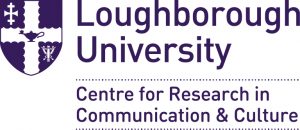
Dr Katy Parry
Lecturer in Media and Communication, University of Leeds.
Email: k.j.parry@leeds.ac.uk.

Section 5: Campaign and Political Communication
- Why facts did matter in the campaign
- Less a soap opera, more a fantasy drama?
- The rhetoric of the EU Referendum campaign
- A (very) brief period of Habermasian bliss
- Britishness and Brexit
- Neither tackling lies nor making the case: the Remain side
- Break-point for Brexit? How UKIP’s image of ‘hate’ set race discourse reeling back decades
- Referendum campaign broadcasts on television: A generational clash?
- Interaction and ‘the floor’ in the televised debates of the EU referendum campaign
- Comedy clubs offered a better quality of debate than the political stage
- ‘Project Art’ versus ‘Project Fear’: the art establishment against Brexit
- Notes for editors: what the campaign press releases tell us about Vote Leave and Britain
The EU Referendum campaign has been widely criticised as one of the most divisive, ugly and corrosive campaigns in modern British history, the (unintended) consequences of which promise to shape political culture in the UK for some time to come.
On the morning of 24 June, once victory had been achieved, Michael Gove characterised the Referendum as being about ‘one big question: should we leave the political structures of the European Union?’ His deliberately narrow formulation here presents a sterile reduction of the vote, one which denies the complex emotions, mythologies and contradictions at play during this decisive moment in political culture and history. Gove’s stripped-down ‘question’ prompted a personal reflection for me on how, in fact, the campaign had been steeped in political discourse designed to appeal to feelings of national identity and values, brimming with intangible promises of sovereignty, freedom and control. This was anything but a simple question concerning political structures.
Nationalistic energies have been reignited through a potent rhetorical mix of nostalgia, grievances and imagined destiny… the particular character of English nationalism during the campaign was defined more by its fear of others (immigrants) than by a distinctive national sense of self.
As presented in an earlier study with Kay Richardson and John Corner (‘Political Culture and Media Genre: Beyond the News’, 2012), the ‘political culture’ perspective signals a research interest that looks beyond the official political system to include ‘the wider range of orientations, norms and perceptions within which a political system is embedded’ (p4). In this research project, one of our key tasks had been to interrogate the ways in which both serious and playful media genres offer spaces where diverse actors are able to engage with ‘the political’ and to position themselves in relation to its prevailing values and character. At the time, the MPs’ expenses scandal of 2009 appeared to represent a parliamentary low-point in terms of public trust and confidence; with the cultures, ethics and practices of other institutions such as the police and national press also coming under serious scrutiny in the intervening years. But I would like to call attention to three interrelated developments which have become especially pertinent in the last few months.
Toxicity as the common descriptor for political discourse. There is a noticeable escalation in characterising political culture as ‘toxic’, along with ‘racist’, the ‘politics of fear’, ‘gutter politics’; and this is not just a UK trend. At different points the anger-filled rhetoric is variously instigated by political actors, by traditional media and especially right-wing tabloid newspapers, but also by citizens on social media. How do we move beyond this acknowledgement of toxicity and rhetorical violence to identify causes, triggers or patterns of use?
Evocations of nationhood as anti-immigrant. Nationalistic energies have been reignited through a potent rhetorical mix of nostalgia, grievances and imagined destiny. Whilst the 2014 Scottish Independence Referendum may have sparked talk of self-assertion and governance, the particular character of English nationalism during the campaign was defined more by its fear of others (immigrants) than by a distinctive national sense of self.
Misogyny towards women in public life. Especially for those who speak out on feminist issues, female public figures are often the targets of an online shadow discourse characterised by anonymous and recurrent threats of sexual violence, currently most conspicuously conducted on social media platforms. Female politicians did not feature prominently during the Referendum campaign with the tragic exception of Labour MP Jo Cox, killed on 16 June in what her family believes was a politically motivated attack. It transpired that Jo Cox had reported threats to the police in the months before her death.
The above points suggest a number of worrying trends that have become difficult to ignore. So how might media scholars contribute useful analysis to this state of affairs? Certainly by developing and refining tools and techniques of analysis that are able to keep pace with the rapid changes in cultural practices and media technologies where they relate to expressions of political allegiance and activity. As noted above, in rhetorically limiting the referendum result to a rejection of the political structures of the EU, Michael Gove’s statement works to deny the troubling complexities and contradictions at play, and which include the emphatically affective. The shocking ‘political cultural moment’ offers a disruptive (and hopefully constructive) space in which to question the beliefs, values and priorities reflected back to us in political and media accounts. The generational, regional, class-based divisions that have come to the fore have been bubbling away and we have not, perhaps, paid sufficient attention. It is imperative that we continue to investigate and critique the media’s role in fostering such divisions while they simultaneously disregard the cultural, structural and economic inequalities which drive them.
Many thanks to John Corner, Kay Richardson and Nancy Thumim for comments on an earlier draft.


